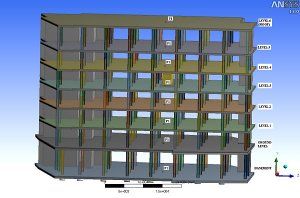Low-vibration design of buildings for sensitive medical and scientific instruments
Some machinery and scientific instruments are very sensitive to vibration. Examples include lasers, supercooled magnets, Scanning Tunnelling Microscopes (STMs), Atomic Force Microscopes (AFMs) or machines for high-precision fabrication found in the semi-conductor industry. These must be installed in environments where the vibration levels are exceptionally low.

Measuring floor vibration at the base
of a sensitive analysis machine
There are no national or international standards which apply, but a number of Vibration Criteria (VC) or National Institute of Standards and Technology (NIST) curves have been devised over the years for acceptable levels in different environments. These range from operating theatres, where magnifying devices used in micro-surgery also magnify vibration levels, all the way down to silicon fabrication, and research centres working at atomic and sub-atomic scales.
Extremely low levels of vibration need to be measured, and ISVR Consulting has the specialist equipment and capability to make such measurements.
As well as measuring exceptionally low vibration, ISVR Consulting can offer Finite Element (FE) modelling to predict the vibration levels in such sensitive environments and assess the effect of equipment such as generators, cooling towers, chillers, combined heat and power units (CHPs), compressors operating in the vicinity, and nearby road and rail traffic.

Finite element model of a building designed to house vibration-sensitive instrumentation
The vibration responses of a building are predicted by generating a Finite Element (FE) model to simulate the building. The model is then used to predict the vibration levels on different floors from the known vibration inputs or sources. In this way, compliance of mechanical services equipment operating close to sensitive scientific instrumentation can be predicted during the design stage before the construction of the building. Other sources of excitation can include internal sources, e.g. low-frequency footfall excitation from people walking in laboratories and circulation areas, or external sources from infrastructure such as rail and road traffic.
See also:
- Designing low-vibration laboratories ↗ (Article on the University of Southampton website.)
- Vibration modelling and performance evaluation of specialist buildings: a designer’s approach. Christos Karatsovis and Malcolm Smith, Paper #208T14 SS4, 24th International Congress on Sound and Vibration (ICSV24), London, 23-27 July 2017 (pdf 500 KB)

